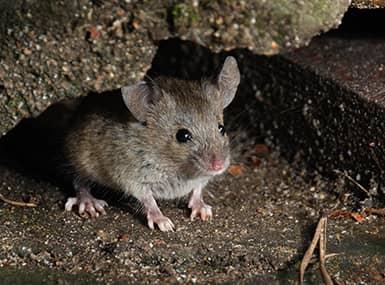It’s no surprise that with the cooler weather of fall comes several scurrying fall pests who are looking for shelter and warmth. Rodents are among those pests and are often the most irritating and disgusting to deal with. As winter is drawing closer, many types of rodents view your home as a safe haven to avoid the brisk winter air.
Deer Mice And House Mice
While both deer mice and house mice tend to invade homes more in the fall and winter, it is more likely that you’ll find a house mouse inside than a deer mouse. House mice are more at home indoors (which is where they get their name) while deer mice prefer to stay outside most of the time.
- Deer mice and house mice share a lot of similarities, but here are some differences to look for.
- House mice tend to be about 5 inches long, while deer mice are slightly larger at 7 inches.
- Deer mice have strikingly white undersides and feet, and house mice are a more uniform gray or brown.
- House mice are foragers and will nibble on whatever they can find, whenever they find it, while deer mice will gather food and store it away for later.
Mice love chewing on wooden items, furniture, mattresses, and other fabric materials to build their nests, which is not only destructive to the integrity of your home, but also to the things inside your home.
Having either type of mouse steal your food is not an appealing idea to anyone. Both breeds tend to carry fleas and ticks on their fur when they enter your home, which can lead to Lyme disease. Mice bring their own diseases such as salmonellosis and leptospirosis into your home, and deer mice have been known to be carriers of hantavirus—which has been fatal in a few cases.
Meadow Voles
Often confused with moles, these small, mouse-like rodents are about 3 inches in length and cause damage to your yard rather than your house in Moline or throughout the Quad-City area's. Voles are quite similar to house mice, however, voles tend to be shorter, have smaller and more rounded ears, and a rounder head in general. The damage a vole causes to your lawn is often not found until extensive damage has occurred. Unlike moles, voles do not leave mounds of dirt or visible tunnels above ground. Voles dig much deeper and their tunnels can reach far into the depths of your yard without leaving a trace. Their target? Your plants. Fruits, roots, nuts, and other garden plants are in danger once voles start tunneling through your lawn. Even if you don’t own a garden, these pests will target the roots of your greenery, grass, and other decorative plants, causing them to yellow and whither.
Norway Rats
Nobody wants a rat in their home. Disgusting, disease-ridden, and scary are just a few of the words many people associate with these rodents. Like other rodents, a Norway rat’s incisors grow continuously, meaning they have to gnaw on things regularly to keep them from growing too long. This means that doors, ceilings, walls, attics, and floors can take significant damage because of their gnawing behavior. Short-circuiting and malfunctions with electronic appliances are often attributed to Norway rats that have chewed through major electrical wires.
Like mice, Norway rats carry several harmful and dangerous diseases that can be transmitted to humans and other animals, which is a health hazard that must be taken care of immediately.
The best way to take care of any pest problem quickly and efficiently is to call one of Quik-Kill’s many pest control experts. It’s never a good idea to try and rid yourself of rodents using DIY methods. When rodents are cornered, they often revert to aggressive behaviors in order to escape, and one bite can lead to several health problems. At Quik-Kill, we have all the necessary tools to rid your home of rodent pests. Let us take care of these pests for you, giving you the peace of mind you need. Give us a call today to schedule your free no-obligation inspection and for more information on how we can help.

